Transporting goods and materials requires a reliable vehicle that can carry the load with ease. For this reason, many people turn to dual-axle trailers when it comes to hauling heavy items. However, some may wonder if it’s possible to drive a dual axle trailer with only three tires. In this blog, we’ll cover everything you need to know about the matter.
Table of Contents
A Dual Axle Trailer: Benefits and Drawbacks
When it comes to trailers, choosing the right one can be a tough decision. With several options available in the market, it is important to evaluate the needs and find the best fit for you. One such option you may want to consider is the dual axle trailer. With benefits like improved stability and weight distribution, it is quite popular among the trailer community. However, like any other trailer, it has its drawbacks too. Let’s explore the pros and cons of owning a dual axle trailer.
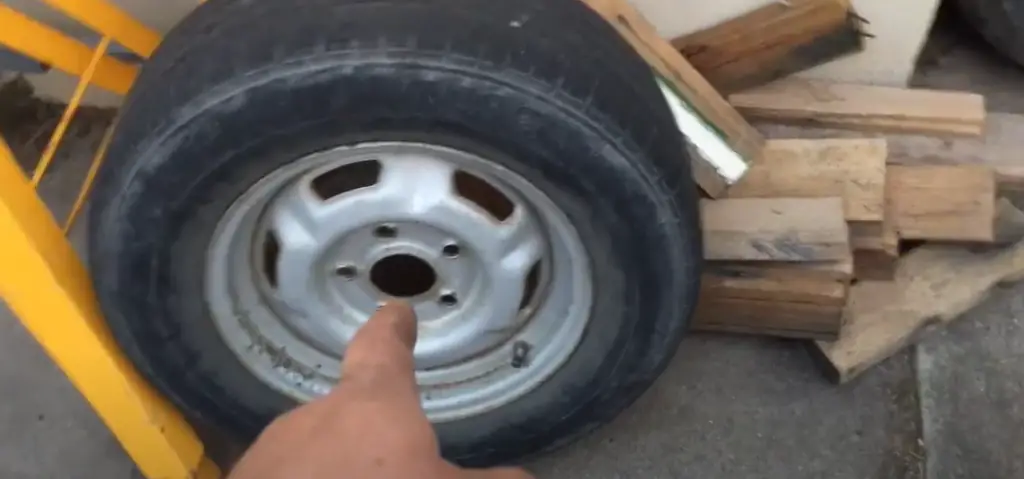
Benefits of a Dual Axle Trailer
- Better stability: The dual axle trailer provides better stability when towing heavy loads. With two sets of wheels, it distributes the weight more evenly, making it less prone to swaying or bouncing while in transit.
- Improved handling: The extra set of wheels makes maneuvering the trailer much easier, especially when making sharp turns or reversing.
- Less wear and tear: Compared to a single axle trailer, the dual axle trailer experiences less wear and tear on its tires, suspension, and frame.
Drawbacks of a Dual Axle Trailer
- Maintenance: Since dual axle trailers have more wheels and parts, the maintenance cost can be higher. It is essential to keep all four tires inflated evenly and check all components regularly.
- Limited fuel economy: Dual axle trailers weigh more and can lead to reduced fuel economy. This can make long hauls challenging and can be expensive in gas costs.
- Not suitable for light loads: Dual axle trailers are designed primarily for heavy loads, making them less suitable for light loads. If you are looking to carry smaller items, single axle trailers are recommended.
The improved stability, handling, and higher carrying capacity are just some of the benefits. However, their higher upfront cost, maintenance, and lower fuel efficiency make them less suitable for light loads and short trips. It is essential to evaluate your needs and budget before investing in any trailer. Ultimately, the choice of a dual axle trailer will depend on your specific circumstances.
The Challenges of Driving a Dual Axle Trailer
Driving a dual axle trailer is a task that requires a patient and experienced driver. It’s not something you can just jump into and expect to do well without any previous experience. Even seasoned drivers can find it challenging since the weight and balance distribution can drastically change compared to a regular vehicle. Here, we will be discussing the challenges of driving such a trailer, as well as some tips and tricks on how to make the task easier and safer.
Proper Weight Distribution
One of the most important things to consider when driving a dual axle trailer is proper weight distribution. This means that the weight of the load should be evenly distributed between the two axles to balance the trailer and prevent swaying or fishtailing. This requires careful loading and proper weight distribution. If the weight is not even, it can cause a dangerous situation, making it hard to control the trailer, especially during turns. [1]

Maneuvering Through Tight Spaces
Driving a dual axle trailer requires a lot of practice to be able to maneuver it through tight spaces. It’s not always easy to take tight turns, especially when towing a large and heavy load. When driving through tight spaces such as narrow roads, alleyways, or parking lots, it is important to take things slow and steady. Making sudden or quick movements with a trailer can cause the trailer to sway or jackknife, which can lead to accidents.
Reversing
Reversing a dual axle trailer is also a challenging task. It is essential to be able to reverse the trailer since it’s not suitable for making U-turns. When backing up, it’s essential to drive slowly and use the mirrors to judge the trailer’s position. In addition, it’s best to have a person outside the vehicle to help guide you around obstacles and provide additional guidance to ensure safe movement.
Braking System
A trailer with dual axles requires a strong braking system. The weight of the load, coupled with the trailer’s size, requires a braking system that can handle the pressure and prevent accidents. In case the brakes on the trailer aren’t enough, it is essential to upgrade to an electric brake system, which is much more reliable than the regular drum or disk brake system. The electric brake system is designed to work in tandem with the car’s brakes, making it easier to stop a moving trailer.
Safety Check
Before hitting the road, it’s always important to make sure that everything is safe and secure. This means making a quick safety check to ensure that the trailer is attached correctly and that the brakes, lights, and turn signals are all functional. Taking a few extra minutes to perform a safety check can save you from potential hazards and ensure that you arrive at your destination safely.
Driving a dual axle trailer is not an easy task, but it’s crucial to be able to do it safely and correctly. By following the tips and tricks outlined above and practicing regularly, you can become a skilled driver. Proper weight distribution, maneuvering in tight spaces, reversing, upgrading braking systems, and performing safety checks are some of the essential aspects of driving a dual axle trailer. Keep these factors in mind and always drive safely, and you’ll be on your way to enjoying an easier, more enjoyable towing experience.
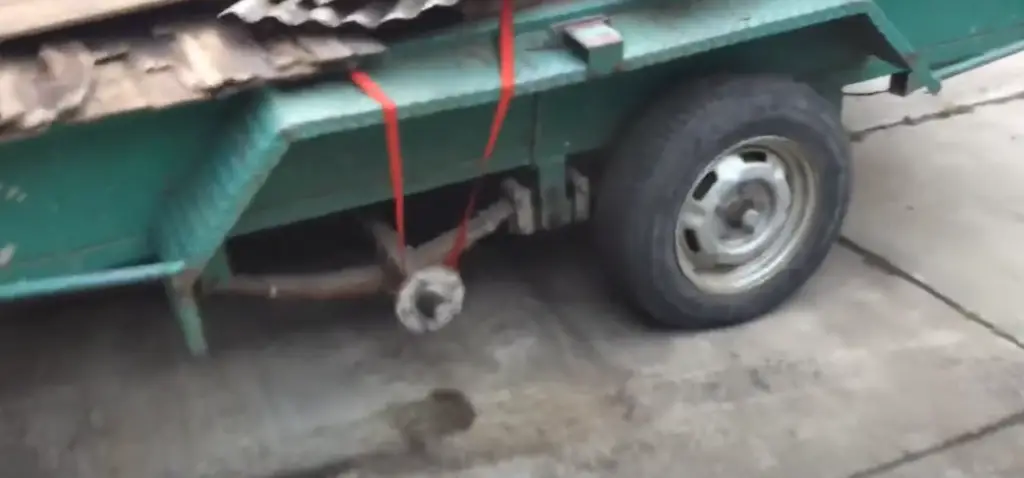
A Dual Axle Trailer and a Tandem Axle: Are They the Same?
When you are in the market for a new trailer, the terms may be confusing, especially when they refer to the number of axles. Dual axle trailers and tandem axle trailers are generally included in the same category, but they are not identical. So, what’s the difference? This part aims to clarify the distinctions between the two.
A dual axle trailer is a type of trailer with two axles that are spaced closely together. These axles are located one behind the other and are connected to the wheels on either side. When the trailer is in motion, the weight is distributed between the two axles, reducing the stress placed on both tires. This makes it easier to haul heavier loads, as it offers extra stability. [2]
A tandem axle trailer, on the other hand, has two axles that are widely spaced apart. Each axle has two wheels on each side, making a total of four wheels. This kind of trailer has a high weight capacity and is frequently used for commercial usage.
Due to the wider spacing of the axles, driving a tandem axle trailer takes some getting used to. Tandem trailers cannot turn as tightly as dual axle trailers, so they need more space to turn. But, on the other hand, tandem axle trailers offer superior stability on the road, due to their wider base, which makes them safer to drive, especially when hauling heavy or unbalanced loads. [2]
Dual axle trailers and tandem axle trailers are not the same since the type of load they can carry varies depending on the spacing of the axles. Understanding their distinctions is crucial since they are preferred for various hauling tasks and situations, such as commercial operations, recreational use, or farming. When choosing between a tandem axle or a dual axle trailer, consider the tons you need to pull, your transportation style, and the length and frequency of your trips.
In conclusion, dual axle trailers and tandem axle trailers are not identical. They both have different weight capacities, stability, and handling capabilities, depending on the purpose they serve. Choosing between the two hinges on the kind of loads you will be carrying, the distance of your travels, and the frequency of your trips. In the end, it all comes down to personal preferences, budget, and the purpose the trailer will serve. Understanding the variety of trailers is critical not only for making an informed decision, but for knowing the ins and outs of trailering in general.
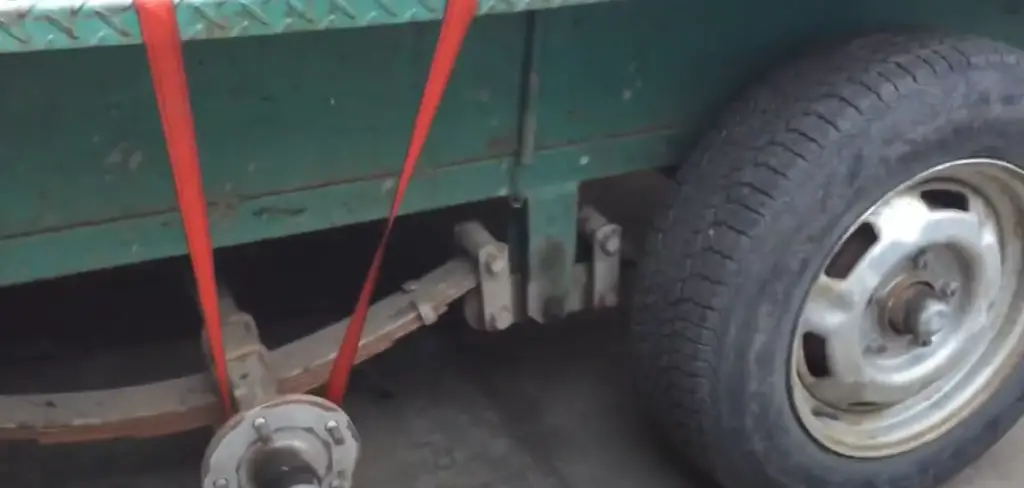
Driving a Dual Axle Trailer With 3 Tires: How to Do It?
If you’re new to towing a dual-axle trailer with three tires, you might be a little intimidated. However, once you’ve gotten the hang of driving with this type of trailer, it’s not much different from driving with a standard dual-axle trailer. Now, we will guide you on how to drive a dual-axle trailer with 3 tires with ease and safety.
First of all, make sure your vehicle is compatible with dual-axle trailers. Your vehicle should have enough power to tow the weight of the trailer you’re planning to use, and it should also have a hitch that is compatible with your trailer. It is important to review the manufacturer’s guidelines on hitch compatibility before you start towing.
Practice driving with an empty trailer before you carry any cargo. If you have never towed a dual-axle trailer before, it’s important to take things slow and practice in an empty parking lot. Get a feel for the size of the trailer and how it turns. This will help you avoid accidents and build your confidence for when you add cargo to the trailer.
Check that all the tires are in good condition and inflated properly. This will ensure the trailer is stable and lessen the risk of a tire blowout. A tire blowout while driving can cause a dangerous situation and damage your trailer.
Slow down and safely park your trailer. When you’re approaching your destination, give yourself plenty of time to decelerate and come to a complete stop. If you’re backing up with the trailer, use your mirrors and back up slowly while checking your surroundings. When your trailer is parked, make sure it’s level using blocks or stabilizing jacks.
Driving a dual-axle trailer with three tires doesn’t have to be complicated. With patience and practice, you can quickly master this skill. Always remember, taking the right steps and precautions before you tow makes a big difference in ensuring your safety and the safety of others around you. Get started with empty practice rides and gradually add cargo to the vehicle as you increase your confidence with handling the trailer. Happy and safe travels!
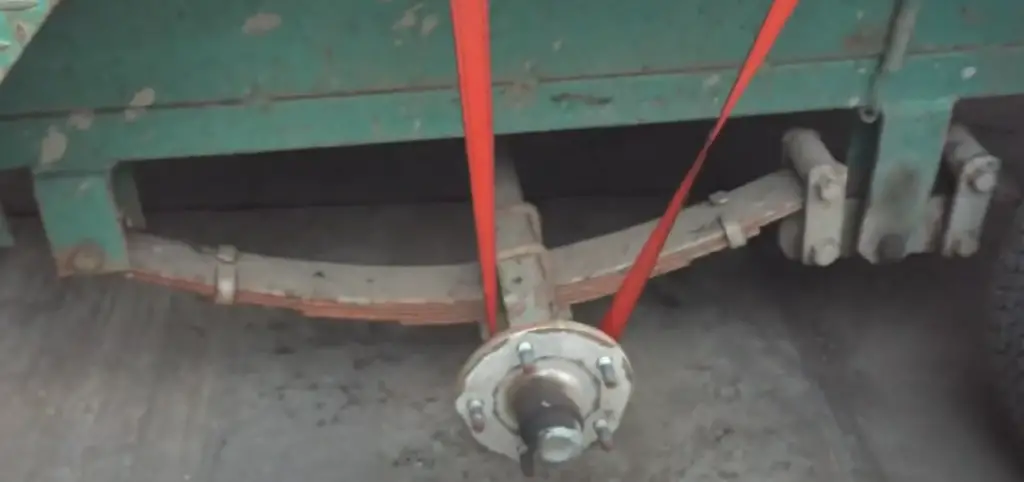
The Risks Of Driving a Dual Axle Trailer With 3 Tires
Driving with a dual axle trailer may seem like a convenient option, but there are certain risks involved that one needs to be aware of. This is particularly true if you’re driving a dual axle trailer with three tires. Not only does it compromise the safety of your vehicle, but it also puts other drivers on the road in danger. Let’s explore the risks associated with driving a dual axle trailer with three tires and how you can avoid any potential hazards.
- Lack of Stability – The biggest risk of driving a dual axle trailer with three tires is the lack of stability. Dual axle trailers are designed to distribute weight evenly, but removing one tire disrupts this important balance. The result is a trailer that is prone to swaying and tipping over. This is particularly dangerous while driving on the highway or at high speeds. [3]
- Increased Tire Wear – With only three tires supporting the weight of the trailer, each tire is carrying a greater load. This leads to increased wear and tear, which can result in a blowout or a flat tire. A flat tire can be dangerous while driving, especially if you’re towing a large trailer.
- Reduced Braking Distance – A dual axle trailer with three tires has a longer braking distance as compared to a trailer with four tires. This can be problematic in an emergency situation. You may not be able to stop in time, and this can lead to a serious accident.
- Unstable Cornering – The stability of a dual axle trailer with three tires is also affected during cornering. The reduced number of tires makes it more difficult to round corners, especially at high speeds. This can result in the trailer jackknifing or swinging out of control, which can be a major hazard on the road. [3]
- Legal Issues – Lastly, it’s worth noting that driving a dual axle trailer with three tires can also lead to legal issues. In many states, it is illegal to operate a trailer with an odd number of tires. If you’re caught, you may face hefty fines or penalties.
Rotating the Tires On a Dual Axle Trailer: Is It Needed?
Maintaining your dual axle trailer is essential if you want to keep it in top condition. One of the things you need to consider is the tires. Like any other vehicle, your trailer’s tires will wear out and need replacement at some point. However, rotating the tires on a dual axle trailer is also something you might consider doing. But is it needed?
First, let’s look at the benefits of rotating the tires on your dual axle trailer. Rotating the tires on your trailer is an effective way to extend their lifespan. When you rotate the tires, you’re distributing the weight evenly, which will reduce uneven or premature wear and tear on the tires. This prolongs their lifespan, saving you time and money in the long run. Additionally, rotating the tires can improve the overall handling and performance of your trailer on the road.
Next, let’s talk about how to rotate the tires on your dual axle trailer. The process might seem intimidating, but it’s not difficult to do. Start by jacking up one side of the trailer and removing the wheels. Then, move the front wheel to the back and the rear wheel to the front. Repeat the process for the other side of the trailer. Be sure to follow the manufacturer’s instructions carefully to ensure that you’re doing it correctly.
It’s also important to note that not all trailers necessarily need to have their tires rotated. For instance, if your trailer carries a heavy load or is frequently used, then tire rotation is necessary. On the other hand, if it’s a lightweight trailer that’s only used occasionally, then it might not need tire rotation.
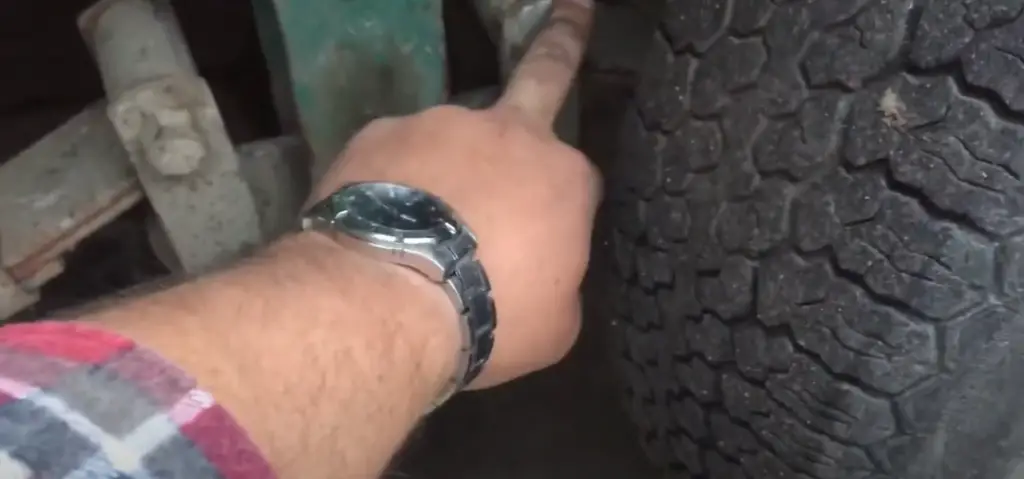
Safety Precautions
As a driver, it’s essential to take all the necessary precautions to ensure that you, your cargo, and other road users are safe. Here we’ll discuss some of the essential safety precautions when driving a dual axle trailer with 3 wheels.
- Understand the weight distribution: A dual axle trailer with 3 wheels requires an even weight distribution to maintain a proper balance. Make sure that you move the cargo forward as close as possible to the trailer’s wheels to maintain the right balance and prevent sway. Additionally, ensure that you don’t overload the trailer, as this increases the risk of accidents and damages.
- Check the tires and brakes: Before hitting the road, it’s essential to check the tires and brakes of the dual axle trailer. Make sure that the tires have the correct pressure, and all the lug nuts are properly tightened. Additionally, test the trailer’s brakes to ensure that they are working correctly. Faulty brakes and underinflated tires are one of the leading causes of accidents involving trailers.
- Slow down and maintain a safe distance: Driving a dual axle trailer with 3 wheels requires much more space and time to come to a stop than a standard vehicle. As a result, it’s imperative to reduce your speed and maintain a safe distance from other road users. Ideally, you should maintain a distance of at least 4 seconds from the vehicle ahead when driving in ideal weather conditions. However, in wet or icy conditions, you should increase the distance to 6 seconds.
- Use appropriate towing mirrors: When driving a dual axle trailer with 3 wheels, visibility can be a challenge. Therefore, it’s critical to use appropriate towing mirrors to provide an adequate view of the road and other road users, including cyclists and pedestrians. The mirrors should be adjusted to cover both the trailer and the towing vehicle’s blind spots.
- Properly hitch and unhitch the trailer: Hitching and unhitching the dual axle trailer to and from the towing vehicle can be challenging, especially if you’re not experienced. Properly hitching the trailer requires attaching the safety chains, trailer brakes, and the electrical connector correctly. Additionally, ensure that the trailer is level and that the hitch ball matches the coupler size. Always refer to the manufacturer’s instructions and best practices when hitching and unhitching the trailer.
FAQ
Can a trailer run on 3 wheels?
Yes, a trailer can run on 3 wheels, but it’s not the most common configuration. Trailers generally have either one or two axles with two wheels each.
Why are dual axle trailers better?
Dual axle trailers have a number of advantages over single axle trailers. First, dual axle trailers are more stable and can handle more weight. Because dual axle trailers have two pairs of wheels, the weight is distributed more evenly, resulting in a smoother ride. Second, dual axle trailers are less likely to tip over because they are more stable. Finally, dual axle trailers are easier to manage in high winds or severe weather conditions.
How many axles should a trailer have?
The number of axles a trailer should have depends on the weight and size of the load you will be hauling. If you are hauling a light load, a single axle trailer will do the job.
Useful Video: Get your tandem trailer home on three wheels
Conclusions
In conclusion, it’s never advisable to drive a dual axle trailer with only three tires. It significantly increases safety risks, and in the long run, it could contribute to damage to your vehicle. Always ensure that all tires are fully functional and in good condition before driving your dual-axle trailer. Remember, it’s better to be safe than sorry!
References:
- https://rac.com.au/car-motoring/info/single-vs-dual-axle-trailers#:~:text=As%20dual%20axle%20trailers%20are,affecting%20braking%20and%20steering%20performance.
- https://www.coastalhire.com.au/blog/difference-between-a-single-and-double-axle-trailer/#:~:text=Double%20axle%20trailers%2C%20of%20course,because%20they%20have%20fewer%20wheels.
- https://www.exploringthelocallife.com/can-you-drive-a-dual-axle-trailer-with-3-tires/

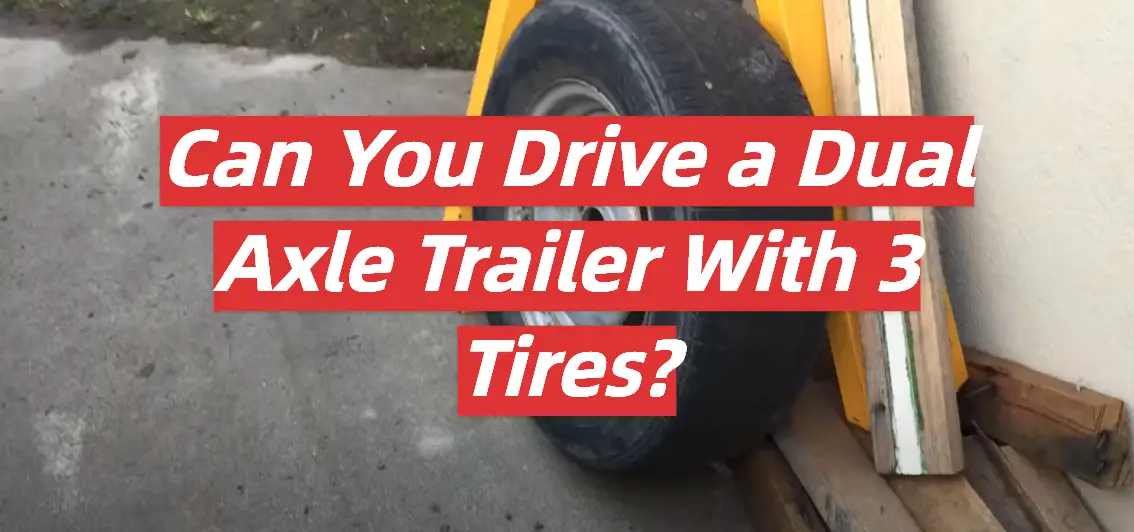



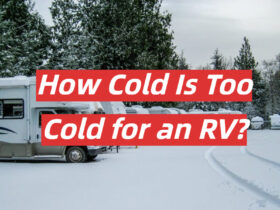
Leave a Reply